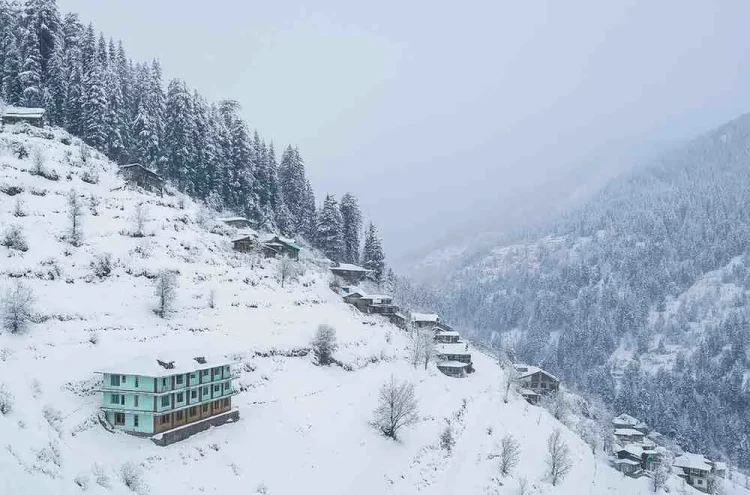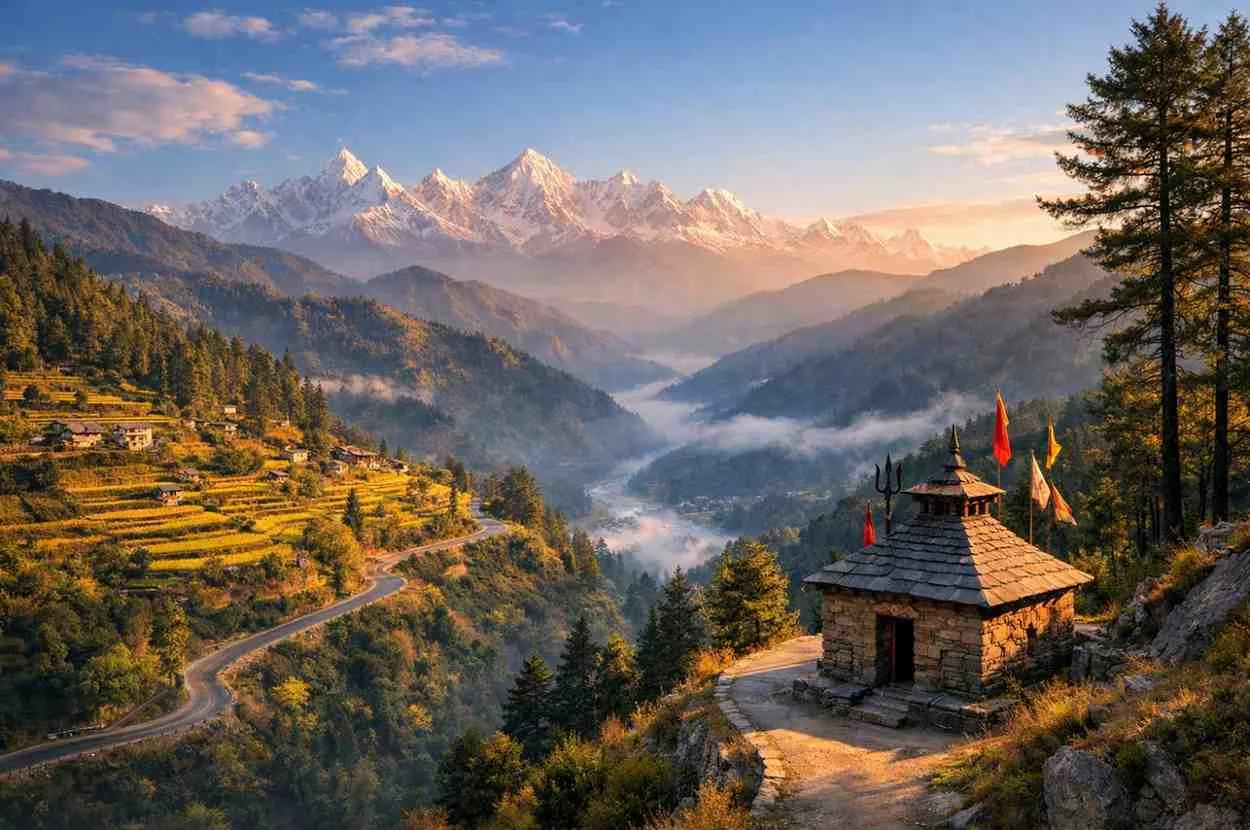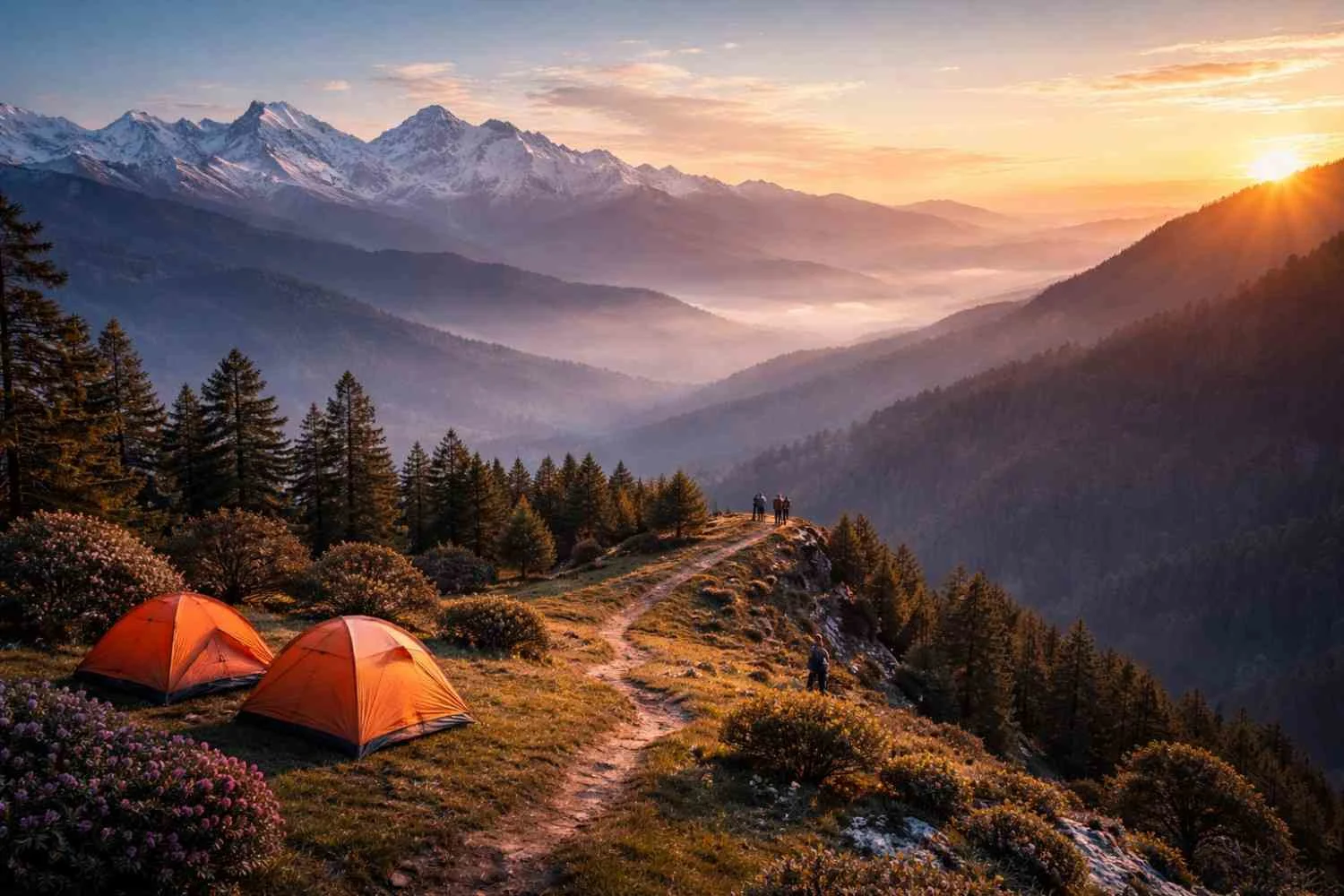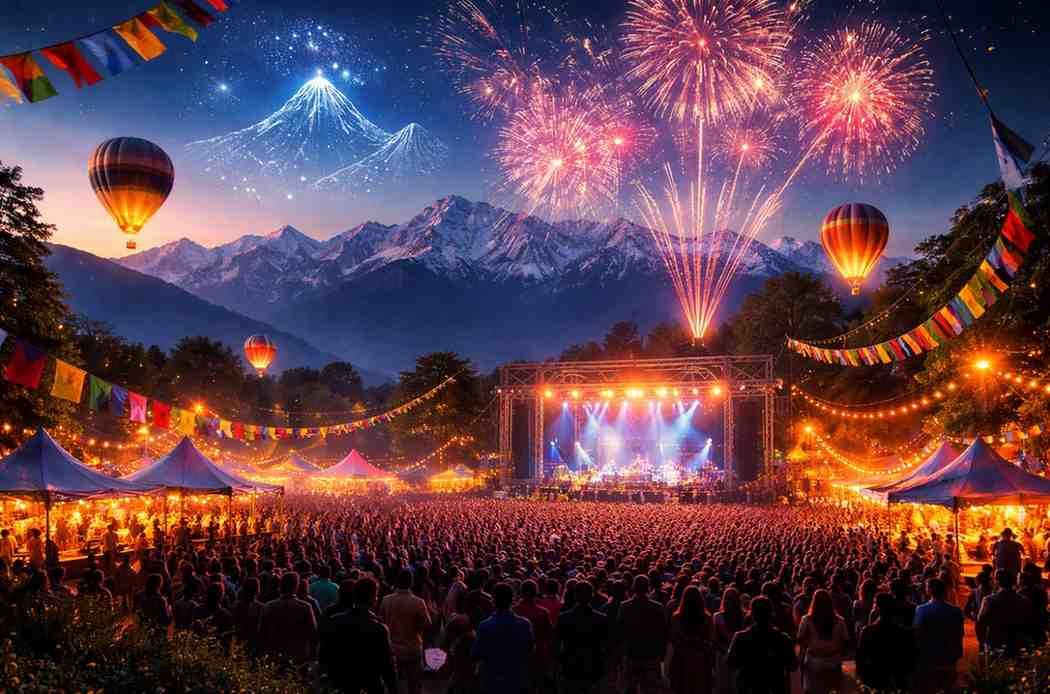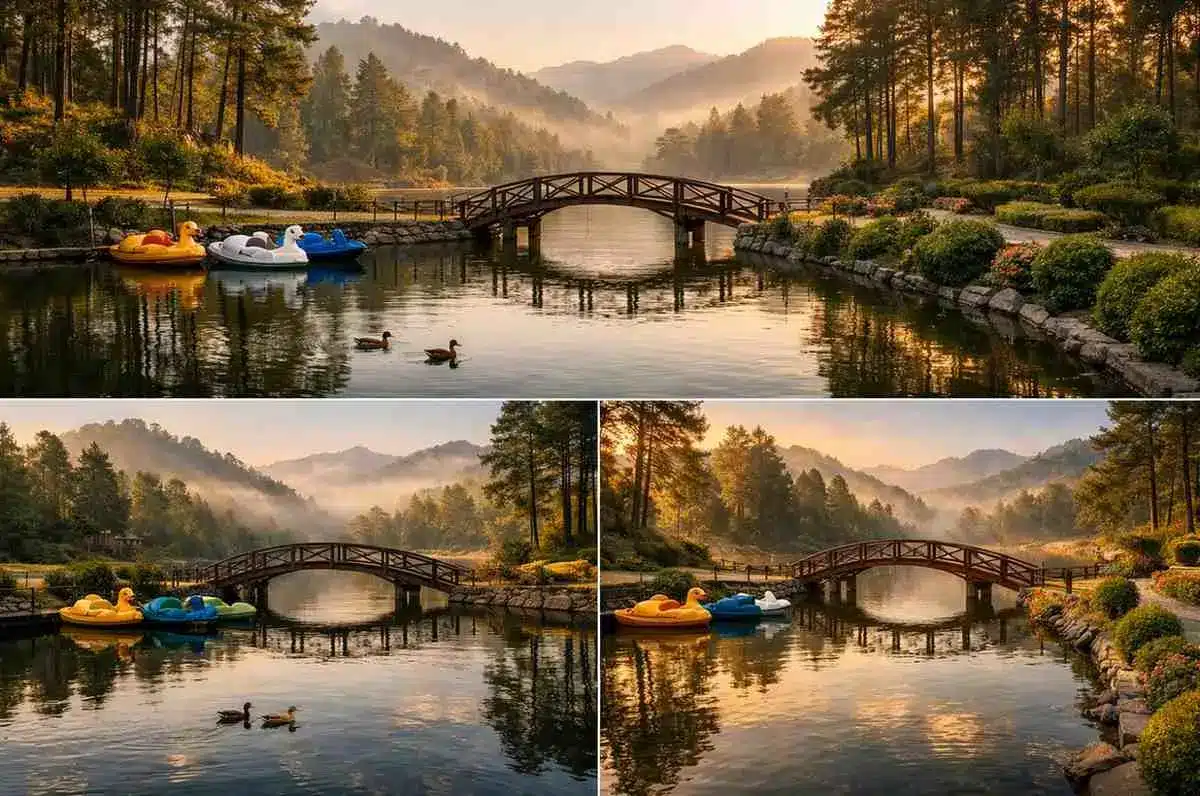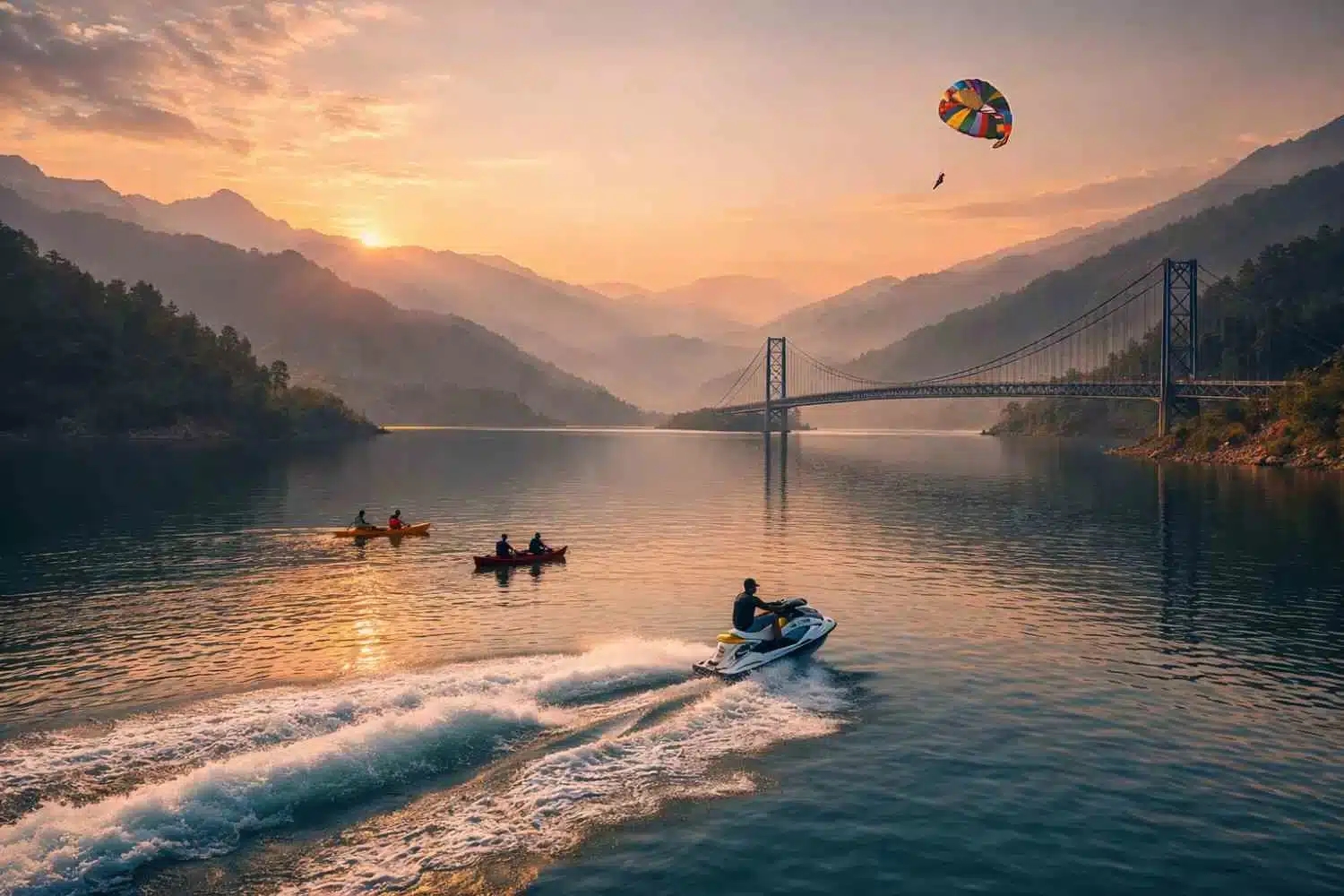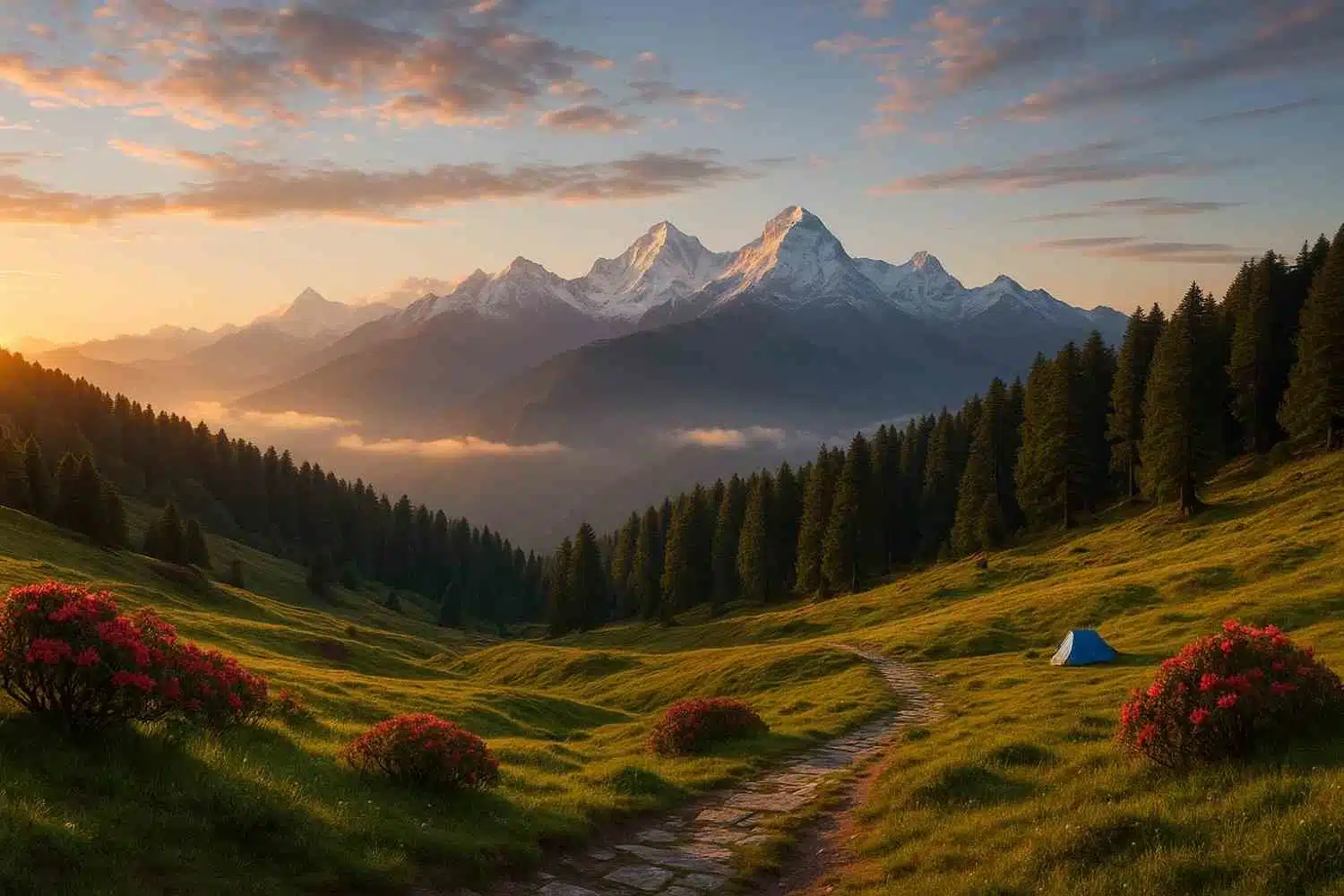Shoja is a tranquil hamlet tucked away in the Seraj Valley of Himachal Pradesh. This hidden gem offers an offbeat vibe that sets it apart from more commercial hill stations. With fewer tourists, Shoja is an antidote to busy mountain towns-it feels untouched, serene, and honest. Unlike Jibhi, which has seen a surge of guesthouses and cafes, Shoja maintains a low profile. The peace here is tangible, broken only by birdsong or the rustle of trees.
Here’s the thing: Shoja doesn’t market itself. It doesn’t need flashing signboards or trendy eateries to attract visitors. Instead, the beauty lies in its simplicity-winding forest trails, homemade food, and that unbeatable view across the valley. Jibhi has charm, sure, and its appeal. But Shoja offers something deeper: a chance to slow down. It’s a place to breathe, to reconnect, and to listen. In Shoja Himachal Pradesh, you won’t find lines of people chasing Instagram shots. Instead, you’ll discover a natural moment, unspoiled and awaiting your presence.
If you’re serious about peace, if you want to walk a less-traveled path, Shoja is calling. And once you step into this quiet corner of Himachal, you won’t want to leave it behind.
Where is Shoja Located?
Shoja sits at approximately 8,000 ft in the Seraj Valley of Himachal Pradesh. Perched above the Jalori Pass, it balances elevation with accessibility, making it a mountain town that feels remote without being unreachable. The landscape is dramatic-pine forests, alpine meadows, and steep ridges drop into valleys below.
From Jibhi, Shoja is just a short 7–10 km drive, winding through fragrant forests and crisp mountain air. Heading uphill from Banjar, you reach Shoja after a scenic climb. Further up lies Jalori Pass, a high mountain saddle that shapes the local climate and landscape. The altitude keeps things cool year-round and dusts the town with snow in winter.
Geographically, Shoja is tucked into a basin surrounded by peaks. From your window you can see rolling ridgelines that merge into distant Himalayan summits. It feels tucked away and utterly peaceful. Regions nearby include Banjar to the south and Jibhi to the west, but Shoja remains its own entity-quiet, contemplative, and wild.
If you’re mapping your route, think: Chandigarh or Delhi → Aut → Banjar → Shoja. The curves are many, but the reward is just around the bend: an offbeat haven in the heart of Himachal Pradesh.
Why Choose Shoja Over Jibhi?
Shoja is quieter. Plain and simple. You won’t encounter clusters of tourists or long lines at popular spots. Shoja Himachal Pradesh doesn’t cater to weekend crowds, so weirdly, it never feels rushed or crowded. Instead, it stays low-key-untouched meadows, fewer guesthouses, and much less commercialization compared to Jibhi’s growing tourist infrastructure.
If you’re a solitude seeker, Shoja is ideal. You can walk forest paths without bumping into people, sip chai while watching mist drift through pine trees, or lie underneath a canopy of stars after dinner. Visitors here tend to be solo travelers or small groups-people who want to listen to the wind, not chat in cafes.
Jibhi is lovely in its own right-it’s got riverside restaurants, homestays, even waterfall trails with friendly signage. It’s charming, but that charm draws more attention. Shoja keeps things simple, old-school. Less focus on multiple options for accommodation; more on home-cooked meals, local interaction, and waking up to nature in your backyard.
What this really means is that if you’re after raw mountain life-unchoreographed and unfiltered-Shoja delivers. If you want curated experiences, Jibhi’s more suited. But if you crave realness, peace, and slower mornings, Shoja Himachal Pradesh is where you want to be.
Top Things to Do in Shoja
Relaxation is a top activity in Shoja. Sit on a balcony at sunrise. Let tea steep. Watch fog drift. The valley view is your backdrop-mist rolling over hills, birds flitting by, and peace surrounding you. It’s enough sometimes to just exist there quietly.
Nature walks are a must. Trails wind through deodar and pine forests. In spring and summer, wildflowers puff along the path. You’ll spot Himalayan birds: woodpeckers, flycatchers, sooty woodpeckers. Bring binoculars and linger-you might glimpse a woodpecker pecking at bark or a mountain finch in flight.
After dark, the skies open up. With almost no artificial light, Shoja’s night sky is unforgettable. Walk a few steps from your stay, lie down, and feel the cosmos above. You’ll see constellations, shooting stars, and even the Milky Way stretching overhead on clear nights.
Forest trails invite exploration. You can hike uphill to ridges, cross streams, or find patches of alpine flowers. The paths are unfenced and informal-each turn could reveal a view you weren’t expecting.
As the sun dips low, local cuisine calls. Homestays and small guesthouses offer simple meals: lentils, rice, veggies, and chapatis made from fresh grains. It’s hearty, comforting, served with mountain warmth. Sit by an outdoor stove, sip hot chai, and listen to the wind in the trees-it’s authentic in a way that food courts can’t match.
This is Shoja-quiet adventure, wild nature, and relaxed living, all rolled into one.
Places to Visit Near Shoja
Jalori Pass is just a short drive away and stands at about 10,800 ft. It’s a mountain saddle with sweeping Himalayan views and the starting point for several treks. Whether you’re driving through or starting a hike, the vistas are immediate and satisfying.
From Jalori Pass, hike 5 km to Serolsar Lake, a turquoise alpine lake wrapped in myths and mountaintops. It’s peaceful, uncluttered, and feels sacred in its solitude. The path winds through forests and meadowlands, leading to a spot that makes you catch your breath.
Raghupur Fort lies near Seraj Valley. Though now in ruins, the high walls offer sweeping panoramas across the surrounding peaks and valleys. Few visitors make it here, so you can sit on old stones and soak it all in-like a private lookout carved in time.
Tirthan Valley is also close. A 30-minute drive brings you to the Tirthan River, lined with fishing huts and riverside cafés. It’s a different pace: bubbling brooks, trout in streams, and relaxing outdoor meals across the water.
Finally, just beyond lies the Great Himalayan National Park (GHNP). A UNESCO World Heritage Site, it’s ideal for wildlife fans. Trekking routes offer chances to spot Himalayan birds, blue sheep, and maybe even shy snow leopards if you’re lucky (and quiet).
Each of these spots complements Shoja’s offbeat charm: less crowds, more nature, fewer trappings, and potential for unforgettable solitude.
Best Time to Visit Shoja
Spring and summer, from April to June, are excellent. The weather is pleasant, meadows bloom, and daylight stretches for long daylight walks. Temperatures hover between 10–20 °C, making it ideal for exploring. Evenings can be cool-carry a light jacket.
Autumn, from September to November, brings crisp air and clear skies. Mountain vistas stretch farther, and bird-spotting improves. It’s peak season for hikers and photographers chasing sharp light and clean air. Temperatures stay between 5–15 °C, though nights start to dip.
Winter, December to February, covers Shoja in snow. It’s postcard-perfect but tricky. Roads close after heavy snowfall, access becomes limited, and many stays shut or cut services. If you’re well-prepared, snow lovers will revel-just expect isolation, few amenities, and COLD.
Monsoon, from July to August, can bring landslides and fog. Trails vanish into cloud banks, and roads may close. It’s not ideal for firm plans, but for those chasing moody forest scenes, it has its own charm.
If peace matters more than sun, autumn is best. If flowers and green hills draw you, spring–summer is unbeatable. And if you’re after solitude with snowy stillness, winter income is rare-and worth it with the right gear.
Also Read: Indrahar Pass Trek, Himachal Pradesh
Where to Stay in Shoja
Homestays are common and worth it. Local families host guests in simple rooms with personal touches-homemade food, stories about the valley, and warm mountain hospitality. You’ll wake up to fresh solar-heated water and valley views, and wonder why more places don’t feel so real.
Budget cottages and eco‑lodges offer affordable stays too. These small-scale setups focus on sustainability-solar lighting, composting toilets, wood-fired stoves. The rustic charm is real, and prices remain wallet-friendly. It’s comfort minus fuss.
For solo travelers, offbeat hostels are popping up. Expect dorm-style rooms, common lounges, and fellow travelers to chat with around a bonfire. The vibe’s quiet and reflective-maybe a board game at night, a nature walk by day, and if you’re lucky, band music drifting in from a nearby homestay.
Shoja Himachal Pradesh stays remain small. No big resorts or flashy hotels-just homey stays, open skies, and friendly company. Book in advance if you plan to visit in spring or autumn, as stays can fill up. But even last minute, you’ll typically find a place. Earlier arrivals tend to get the best rooms and the best views.
How to Reach Shoja
By road, the route is Delhi/Chandigarh → Aut → Banjar → Shoja. From Aut, roads-though winding-are in decent condition. Distance: roughly 500 km from Delhi, 300 km from Chandigarh. Plan for a full day to reach Shoja.
By bus, Himachal Pradesh Transport (HPTDC) runs services to Aut or Banjar. From there, local cabs or shared jeeps travel up to Shoja on request. Timings vary, so confirm schedules in advance.
By train, the nearest broad-gauge station is Joginder Nagar, about 100 km away. The line is charming but slow, so people typically take a train to Joginder Nagar, then cab it to Aut/Banjar and onward to Shoja.
By air, the closest airport is at Bhuntar (Kullu–Manali), about 120 km from Shoja. From Bhuntar, taxis or buses head north through Banjar and up to Shoja.
Road access is the backbone-once you’re on wheels, this route is serviceable. In winter, passes closed. In monsoon, occasionally blocked. Best advice: check road status before you go. Once on the Seraj Valley route, the views begin-wide mountain valleys, pine forests, and hints of Shoja waiting above.
Shoja for Solo Travellers
Shoja is welcoming. People arrive alone, looking for stillness, time to think, and space to wander. Locals are friendly and helpful, offering directions, adding an extra cup of tea, or inviting you to home‑cooked meals. You’ll find yourself part of a small community quickly.
Community stays encourage connection. Conversation around a fire, shared cooking, or even group walks become natural. In Shoja Himachal Pradesh, you’ll stay alone but won’t feel lonely. The rhythm of life here is gentle-you match that easily.
The absence of mobile network is a feature, not a bug. For many solo travelers, it’s a rare digital detox. You won’t find fast 4G here; most times, you won’t find coverage at all. The result? No distractions. Instead, you look at trees, sunsets, and your own thoughts.
Shoja isn’t for flashpacking; it’s for unplugging. Especially solo, you’ll come for the views but stay for the quiet. And when you leave, even your phone feels loud.
Tips for Visiting Shoja
Bring warm clothes year‑round. Even in summer, nights dip to 5 °C. In winter, temps dip below freezing. Think layers, thermals, and a good jacket.
ATMs are scarce. Banjar might have one, but keep cash handy. Guesthouses often prefer payment in rupees.
Respect the valley. Leave no plastic behind, stick to trails, keep noise low. The forests and meadows have stayed peaceful because travelers have kept it honest.
Mobile network is limited. Download offline maps and guides in advance. Download music, books, podcasts. The idea: expect nothing.
Check the weather before leaving. Road closures can pop up in winter or monsoon. Local advice matters-ask them.
Finally, slow yourself down. That’s the point. Read. Walk. Chat with locals. Sit in silence. Shoja is a rhythm, not a destination chock‑full of checklists.
Shoja vs. Jibhi: Quick Comparison Table
| Feature | Shoja | Jibhi |
| Crowd Level | Crowd Level | Moderate to High |
| Commercialization | Minimal | Tourist-friendly |
| Network Coverage | Very Low | Good |
| Ideal For | Peace & Nature | Cafes & Staycation |
Conclusion
Shoja is small, slow, and utterly genuine. It’s a peaceful alternative to Jibhi, the place that doesn’t need to advertise itself. Its beauty is wrapped in mist, forests, and deep quiet. If you want to step off the path, breathe deeply, and return to something real, Shoja Himachal Pradesh delivers.
Plan ahead, bring warmth, and let the valley show its charm. You may come for a few days-but you’ll leave feeling like you carried a piece of mountain stillness with you.
FAQs
1. Where is Shoja located in Himachal Pradesh?
Nestled in the Seraj Valley, at about 8,000 ft elevation near Jalori Pass, Himachal Pradesh.
2. How far is Shoja from Jibhi?
It’s roughly 7–10 km by road, winding through scenic hills.
3. What makes Shoja different from Jibhi?
Shoja has far fewer tourists, minimal commercial development, and weaker network coverage-ideal for peace and solitude.
4. What is the best time to visit Shoja?
April–June for spring blooms, September–November for crisp skies, and December–February for snow (with access challenges).
5. How can I reach Shoja from Delhi or Chandigarh?
Drive via Aut and Banjar. Alternatively, take an HPTDC bus to Aut/Banjar, then a cab. Nearest train: Joginder Nagar. Nearest airport: Bhuntar (Kullu).
6. Are there good places to stay in Shoja?
Yes-homestays, budget cottages, eco‑lodges, and offbeat hostels are available, offering authentic experiences.
7. Is Shoja suitable for solo travellers?
Absolutely. Locals are welcoming, community stays are common, and the minimal digital disruption encourages introspection.
8. What are the top things to do in Shoja?
Valley contemplation, forest walks, birdwatching, stargazing, and sampling local food-simple, reflective activities.
9. Are there any treks near Shoja?
Yes-routes include Jalori Pass to Serolsar Lake, forest trails around Shoja, and access into Great Himalayan National Park.
10. Is a mobile network available in Shoja?
Mobile coverage is very limited. Use offline maps and be ready to go off-grid.
